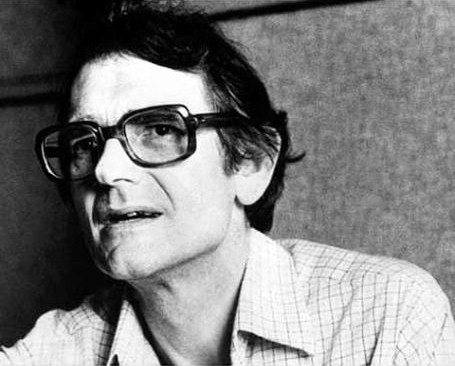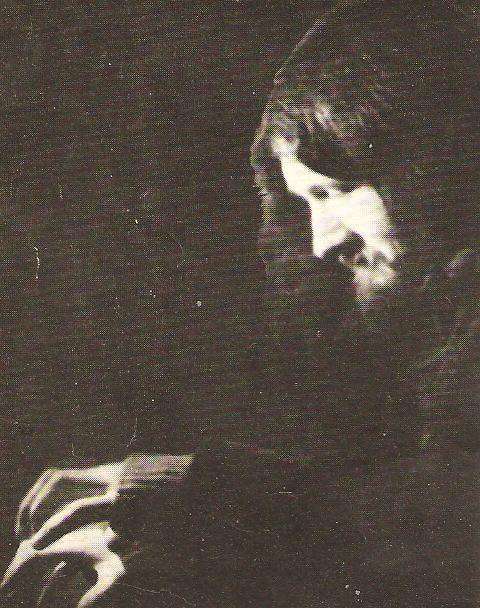
Derek Bailey Plus One Music Ensemble
Derek Bailey Plus One Music Ensemble
Album UK 2012 on Nondo label
Jazz (Free Improvisation)
The re-release of NONDO DPLP 002 DEREK BAILEY plus ONE MUSIC ENSEMBLE (1977) as CD/Download in 2012. Tracks 1 to 6 recorded at Wolverhampton Polytechnic 3/04/1973 Tracks 7 to 12 recorded at Grosvenor Studios, Handsworth Wood, Birmingham 5/7/1974 Additional details for the re-release of NONDO DPLP 002 DEREK BAILEY plus ONE MUSIC ENSEMBLE as CD/Download in 2012. There is an additional track in the One Music Ensemble set. Track 10 is now The Other Side, which was omitted from the original release because of the time constraints of vinyl pressings, and instead released on Nondo DPEP001. Tracks 11 and 12, therefore, are now Home and A Little Sanity Codabye. Below are the liner notes for the re-release. This album was finally released on disc late in 1977 after problems with the pressing plant were resolved, and several years after the original recordings were made, in 1973 and 1974 respectively. Reel-to-reel copies were made available in the interim and subsequently compact audio cassettes. This CD and download release coincides with the concert date, to publicise/celebrate that vinyl release, which Derek and I gave in Birmingham on 28 February 1978, some thirty-four years ago. Age, however, has not withered the music into a contemptuous familiarity. It still has, it seems, the power to shock. Derek’s contribution came about as a result of a series of improvised music events held at the then Wolverhampton Polytechnic organised by Oliver Senior, a fine art student at the time who was also responsible for the recording, and percussionist Roy Ashbury, as part of a general attempt to create performance and recording opportunities for this music in the Midlands. Apart from the generosity shown by Derek (and also John Stevens and Trevor Watts later) in agreeing to appear on NONDO recordings with lesser known musicians, it also presented an opportunity to compare and contrast the working methods of two soloists from differing generations, musical backgrounds, styles and philosophies. Both recordings were of continuous improvisatory performances without any preparation, and in that context record the process of spontaneous creation, albeit in one case in the course of a public performance and in the other a single take studio session. The decision to give titles to different sections of those performances was made afterwards, according to the aesthetic taste of each musician, and bearing in mind the needs of listeners, broadcasters and the copyright royalty collecting agencies. In each case we end up with what appear to be two suites of impromptus, rather than the continuous improvisations we started with, and the titles given owe more to each musician’s sense of humour, non-musical associations or pre-occupations, rather than any intrinsic correlation between them and the music - they are as appropriately arbitrary as the performances. Derek’s stylistic approach was consistent with his musical aesthetic/philosophy that improvisation is where music begins and ends, For him the notion of non-idiomatic improvisation was where musical performance could depart from the formulaic and derivative, giving the improviser an opportunity to be uniquely creative without reference to anything other than himself, the instrument and, if present, other players. It’s a method which must constantly monitor itself to avoid the familiar in its singular pursuit of the original and the new, and one which can bewilder and disturb all but the most committed aficionados with its very lack of familiar musical signposts. This is tough music which gives no quarter and should expect none. The few reviews which appeared for the original album emphasised this difficulty: ‘a sameness about his performances’*, too ‘abstract…no humour, sparse…comparable to swimming in toffee’.** But, conversely, what could be more playfully humorous than these abstractly pointless nonsensical titles: Nellie, Kellie, Bellie, Gellie, Wellie and Tellie? Futuristic Teletubbies perhaps? One of my enduring memories of Derek is his humour, and extending that into and as a facet of his music, there is much less of the difficult, sparse abstraction and more of the human condition to hear in his musical story. The One Music Ensemble, on the other hand, can be defined as a multifarious, multidimensional, multi-instrumental collection of resources, encompassing a range of sound sources, styles and methods and which does not forbid composition (even though it is absent in this performance) nor any other familiar musical or, indeed, non-musical associations and references. These many sources, no matter from where they are derived, become One Music in a singular eclectic mix of the familiar as well as the not so familiar, the juxtapositions of which can, nevertheless, be as bewildering and disturbing as more original voices, the comforting familiar surface may possibly mask a more acerbic centre. One reviewer felt the OME session was ‘too open to distant stimuli’ and in danger ‘…of reproducing …reduced versions of what other people have done’ through a ‘dislocation and fragmentation’ that ‘denies development.’*** One reviewer compared OME as ‘..a solo version of AMM’,* because of the collection of random sounds on So 74’, another found it unintelligible; one describes as ‘disconcerting suddenness’* the move from the familiar to the dissonant avant-garde, on Root and A Little Sanity/Codabye, while another took it in his stride; Sole was missed by everyone except one reviewer who thought it was ‘a single chord (sic) struck once’,** but which was actually the (delayed) last note of the previous track, and so he also missed that particular musical joke; the concluding minutes of Home were found to be on the one hand ‘weird’* and on the other a ’frightening Sprechstimme’**; The Other Side was also missed, not through confusion, but because it was not on the original album due to the time constraints of vinyl pressings, and became the B (or other) side of NONDO DPEP 001 Roy Ashbury Band/One Music Ensemble, but now returned to its rightful place in the performance. As a whole the album was considered as either ‘unjudgeable’** or ‘a rather uneasy coupling’*. But there are probably more congruent than conflicting comparisons to be made between the two performances, in spite of the apparent isolation and apparent absence of interaction in which the soloist operates. Not least the fact that, contrary to the accusation that some musicians have ‘turned away from the main issues of improvisation into a play of means’***, improvisation is about not turning away from means or issues but meeting them head on and dealing with them. However, the sense of freedom to select, as required, whatever seems appropriate in the moment is seemingly a more powerful incentive than the pursuit of originality and the new for its own sake, in communicating musically. In the most inspired moments it can lead to finding new and original ways to express the familiar, through an individual’s unique and singular way of hearing and responding to sound. In that sense we are all potentially capable of originality, even those who are involved in performances, as I used to joke, sometimes without their knowing. Like the recording engineer on the OME session who idled with random echo effects and stereo panning, the latter resulting in the surprising deftness of a six foot Steinway grand piano to move freely around within the stereo field. Like the student audience at a gig at a Stoke-on-Trent College whose efforts to obliterate the music with their loud and raucous voices and then the jukebox, made the musicians play on more determinedly in an environment reminiscent of a John Cage ‘happening.’ Improvisational development seems to happen at a level beyond the sounds heard or the conventional and academic notions that impotently critique what music should or could be, rather than what it is. If it does nothing else, freely improvised music at least raises the pertinent questions, even though its failure to convince critics with pertinent answers is always going to be its Achilles heel. Another criticism of this album was that Derek’s set was ‘very muffled’*** in contrast to the brighter OME studio session. Derek was never precious about recordings, for him they served a practical purpose which could not be addressed any other way. There were a few problems with the original tape: it had apparently been recorded from outside the actual performance area onto old and worn reel-to-reel recording tape before being personally auditioned and edited by Derek himself. The repeated playing of a master recording is not to be recommended at the best of times, and coupled with some roughly applied editing tape and recordings peaks which went into the red - requiring the audio level to be reduced at the cutting stage to avoid distortion - the overall level of the set was reduced by the time it got to the pressing stage. All this was inevitable from the start and Derek’s response was as direct and practical as one might expect: “If you don’t mind, I don’t mind.” We hope you don’t mind either. In fact, judging by the interest in this album and Derek’s set in particular, you are all very positive about it. Enjoy! DP Reviews cited: *Barry McRae, Jazz Journal International, April 1979. **Brian Case, Melody Maker, 7 April 1979. ***Peter Riley, MUSIC, December 1977.
Musicians
 | Derek Bailey g, eg, 1930-2005 GB electric guitar, album by |
 | One Music Ensemble , album by |
 | David Panton as, p, GB alto saxophone, oboe, voice, piano, percussion, electronics, radio, flute, reed-flute |
Album Tracks
| No | Title | Artist | Composer | Duration |
|---|---|---|---|---|
| 1 | Nellie | Derek Bailey | 3:23 | |
| 2 | Kellie | Derek Bailey | 1:51 | |
| 3 | Bellie | Derek Bailey | 2:01 | |
| 4 | Gellie | Derek Bailey | 4:07 | |
| 5 | Wellie | Derek Bailey | 2:15 | |
| 6 | Tellie | Derek Bailey | 2:55 | |
| 7 | So '74 | David Panton | 3:45 | |
| 8 | Root | David Panton | 3:32 | |
| 9 | Sole | David Panton | 2:24 | |
| 10 | The Other Side | David Panton | 5:16 | |
| 11 | Home | David Panton | 4:57 | |
| 12 | A Little Sanity Codabye | David Panton | 2:57 |
ArtistInfo App
ArtistInfo for iOS and ArtistInfo for Mac are presenting musicians, composers and producers that are envolved in the musical work that you are listening to in Apple Music, iTunes, or Spotify. Discover new music via the network among artists. Manage your favorite musicians and albums via iCloud and share recommendations with your friends via email, AirDrop, or Social Media.Acknowledgements
To all the music fans that are contributing on Discogs, MusicBrainz and Wikipedia. Thanks to Franz Flückiger for providing Storygram used to visualize band membership.Other Search Results
| Derek Bailey Plus One Music Ensemble - Derek Bailey Plus One Music Ensemble UK 1977 Jazz |